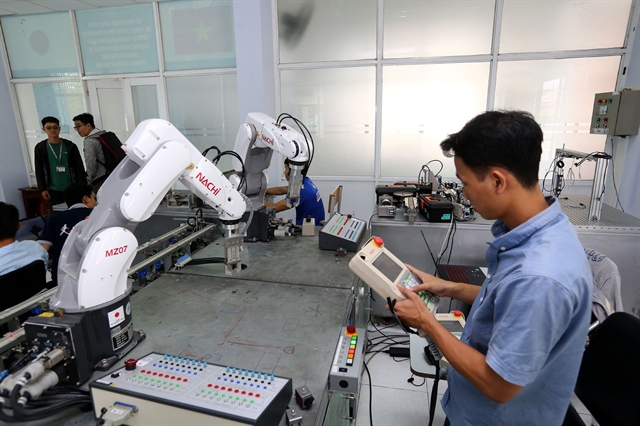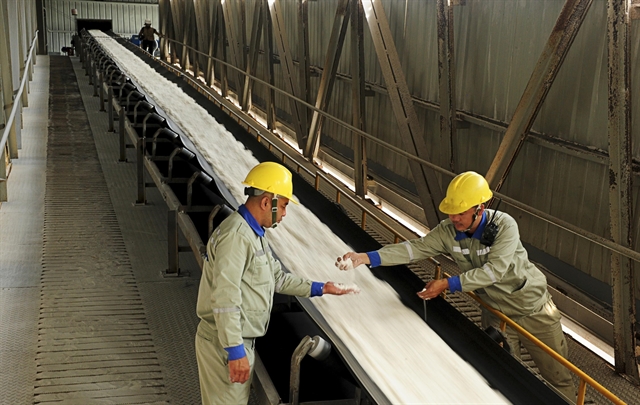 Economy
Economy

The Hà Nội People’s Committee has set 22 targets for socio-economic development in 2019, focusing on State budget restructuring, improvement of its investment and business environment and promotion of the innovation and startup ecosystem.
 |
| Gridlock: Traffic in Hà Nội. The city’s GRDP increased 7.61 per cent, the highest in the last three years, and exports grew 21.6 per cent in 2018. — VNA/VNS Photo |
HÀ NỘI — The Hà Nội People’s Committee has set 22 targets for socio-economic development in 2019, focusing on State budget restructuring, improvement of its investment and business environment and promotion of the innovation and startup ecosystem.
The capital city’s gross regional domestic product (GRDP) is planned at 7.4-7.6 per cent in 2019 and export growth is projected at 7.5-8 per cent.
These targets are set in the city’s action programme No 12/Ctr-UBND on the socio-economic development and State budget estimation in 2019, signed by the city’s chairman Nguyễn Đức Chung on January 10.
In 2018, the capital city accomplished all 20 socio-economic development targets. Its GRDP increased 7.61 per cent, highest in the last three years, and export grew 21.6 per cent (much higher than its initial target of 7.5-8 per cent). The city’s attraction of foreign investment topped the country for the first time after more than 30 years, expected at US$5.6 billion.
According to the programme, this year is a turning point to complete the five-year plan for 2016-20. This has great importance in the context of complicated and unpredictable developments in the region and the world.
Hà Nội’s exports may be affected by protectionist trade and exchange rate policies by some countries, especially the Chinese renminbi could be deeply devalued due to the US-China trade war.
Foreign capital inflows into the capital city may also be impinged by the adjustment of US tax policy. Besides, unpredictable movements of global oil prices will significantly affect the prices of domestic commodities.
The report also said the 10-year cycle of economic crises, though not expected now, should be regularly monitored to ensure a timely response. The fast-moving fourth industrial revolution (Industry 4.0) brings both opportunities and challenges.
In the country, productivity, efficiency and competitiveness of the economy are not high which may create disadvantages for domestic enterprises competing with foreign partners.
However, besides challenges, the domestic economy is expected to maintain its high growth while Việt Nam’s participation in new-generation trade agreements such as the CPTPP and EU-Việt Nam Free Trade Agreement (EVFTA) will be an important factor to promote the country’s trade and investment.
Nine key tasks
The programme focuses on nine tasks and solutions.
Among them is the priority to improve the quality of the city’s investment and business environment, encourage and promote innovation and startups will also be more practical.
Enterprises in the locality will be developed in both quantity and quality.
The city will continue its economic restructuring in association with a changing growth model and improving productivity, efficiency and competitiveness.
The programme emphasises the task of restructuring the State budget, focusing on efficient tax collection, fight revenue losses, especially having measures to collect tax arrears, detect and handle price transfer actions, and closely monitor movements on the forex market to ensure the implementation of business and import-export plans.
Other priorities include urban planning and development, application of information technology in administration and management, stepping up administrative reform, downsizing payrolls, drastic anti-corruption and wastefulness, development of education, healthcare services and culture, ensuring national defence and social order, as well as improving the efficiency of foreign affairs and international integration. — VNS




